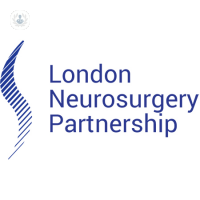Transsphenoidal surgery
What is it?
Cranial endoscopies, or transsphenoidal surgeries, are increasingly being used in neurosurgery. A cranial endoscopy is a minimally invasive procedure used to endoscopically access the cranium. Small holes are made which allow the surgeons access to areas that required a more complex procedure in the past in which the skull had to be opened completely. It is done using intravenous sedation.

Why would you do it?
Transsphenoidal surgery is a much more minimally invasive option than traditional cranial surgery. It is used to remove cystic brain tumours and acoustic neuromas. A small incision is made to carry out the procedure. The recovery time is much faster as the wound is smaller.
What does it involve?
An endoscope is a flexible tube that allows remote area of the brain to be viewed. Using this surgical method leaves a much smaller scar than traditional surgery. It is inserted through a small, five or six centimetre incision in the skull. There are still risks such of a haemorrhage in the brain cavities and for closing the incision made.
Post-operative care
Recovery time is shorter than with traditional surgery. Depending on the degree of difficulty and the spread of tumours, the surgery may take longer, which is why it is important to have an experienced neurosurgeon carry out the surgery. Complete bed rest is recommended for the first three days, as well as taking any medication prescribed.
The wound heals quicker, there is less tissue shrinkage, and the aesthetic results are better.
Alternative treatments
Cranial endoscopy is one of the most advanced surgeries today. It is a minimally invasive technique. An alternative to this treatment is a craniotomy, which is not as precise and has a higher risk of complications. Recovery time is much quicker with a cranial endoscopy.



